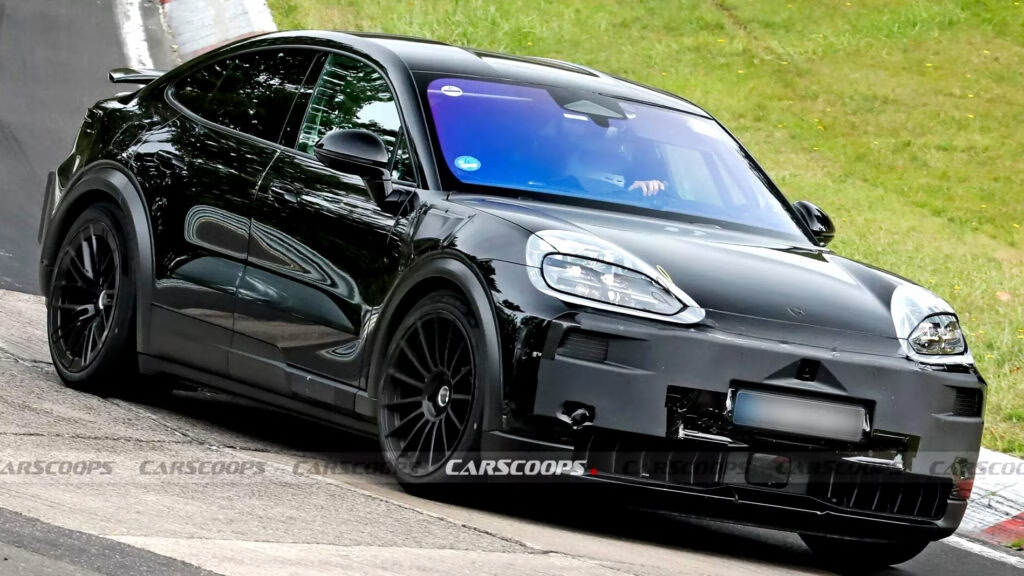What’s New with the Porsche Cayenne EV and Why Are Enthusiasts Buzzing?
Spy shots from the Nürburgring have set the car world abuzz: Porsche’s Cayenne EV prototypes are out in force, sporting a bold new rear wing and a suite of aerodynamic tweaks. It’s not just about looks—these upgrades hint at Porsche’s commitment to making the Cayenne EV a true performance SUV, not just another electric crossover. The fixed rear wing, for instance, isn’t just for show. It’s designed to generate real downforce, keeping those rear wheels glued to the tarmac when you’re pushing the limits. And while it’s not as oversized as the one on the Taycan Turbo GT, it adds a dash of drama and function that’s hard to ignore.
The rear bumper has also been reworked with fresh aero elements, and the wheel arches are noticeably more aggressive. Up front, Porsche’s engineers have slipped in new vents on the quarter panels and a revised bumper—partially camouflaged, but you can spot the intent. These aren’t just cosmetic flourishes; they’re the kind of details that matter when you’re chasing lap times or just want your daily drive to feel a little more special.
How Much Power Will the Cayenne EV Really Have?
Here’s where things get spicy. Porsche has confirmed that the flagship Cayenne EV will launch with at least 1,000 horsepower. That’s not a typo. We’re talking four digits—enough to make even seasoned performance junkies sit up and take notice. For context, that’s more power than most supercars, let alone family SUVs.
But Porsche isn’t putting all its eggs in the “insane power” basket. The Cayenne EV lineup will be broad, with entry-level models starting around 400 horsepower and mid-tier versions delivering somewhere between 600 and 700 horses. This range gives buyers plenty of options, whether they’re looking for a practical daily driver or a silent rocket ship.
The flagship’s powertrain will likely wear the Turbo or Turbo GT badge—yes, even though there are no actual turbochargers in an EV. It’s a nod to Porsche’s heritage, and let’s be honest, marketing names matter. The result? Pure magic for those who crave both tradition and cutting-edge tech.
What About Range, Charging, and Everyday Usability?
Performance is great, but if you’re buying an electric SUV, you want real-world usability too. Porsche seems to get that. Every Cayenne EV will use a 113 kWh NMC battery sourced from LG, supporting ultra-fast 400 kW charging. To put that in perspective, you’ll be able to juice up from 10 to 80 percent in just 16 minutes at a compatible DC fast charger. That’s less time than it takes to grab a coffee and scroll your feed.
Porsche is targeting a minimum range of 370 miles (595 km) on a single charge. That’s competitive with the best in the segment and should ease range anxiety for most drivers. Plus, wireless charging is on the table—no more fumbling with cables if you’re set up for it at home or work.
How Does the Cayenne EV Fit into Porsche’s Broader Strategy?
It’s no secret that Porsche has been rethinking its electric ambitions lately. The company recently pivoted on its upcoming flagship SUV, opting for gas and hybrid powertrains at launch instead of going all-in on electric. But the Cayenne EV project is still full steam ahead, with a planned market debut in 2026.
Why the mixed approach? It comes down to market demand and flexibility. While the appetite for all-electric SUVs is growing, it’s not universal—especially in regions where charging infrastructure still lags. By offering both electric and hybrid options across its lineup, Porsche is hedging its bets and making sure it can serve both early adopters and traditionalists.
Are There Any Unique Features or Surprises in Store?
Beyond the headline numbers, Porsche is clearly focused on making the Cayenne EV feel special. The new aerodynamic elements, the coupe and SUV body styles, and the promise of a high-performance Turbo variant all point to a vehicle that’s more than just a compliance car. Expect the interior to be packed with the latest tech, premium materials, and the kind of driver-focused layout Porsche is known for.
And let’s not forget: Porsche has a habit of sneaking in surprises. The Taycan, for example, set new benchmarks for EV handling and performance. There’s every reason to believe the Cayenne EV will do the same for electric SUVs.
What Should Potential Buyers and Enthusiasts Watch For?
If you’re in the market for a luxury electric SUV, the Cayenne EV is shaping up to be a serious contender. Keep an eye on final specs as the 2026 launch approaches—especially range, charging infrastructure compatibility, and pricing. Also, watch for real-world reviews once prototypes start hitting public roads in earnest.
The big takeaway? The Porsche Cayenne EV isn’t about perfection—it’s about smarter adjustments. Start with one change this week, and you’ll likely spot the difference by month’s end. Whether you’re a die-hard Porsche fan or just curious about the future of electric performance, this is one model that’s worth keeping on your radar.

